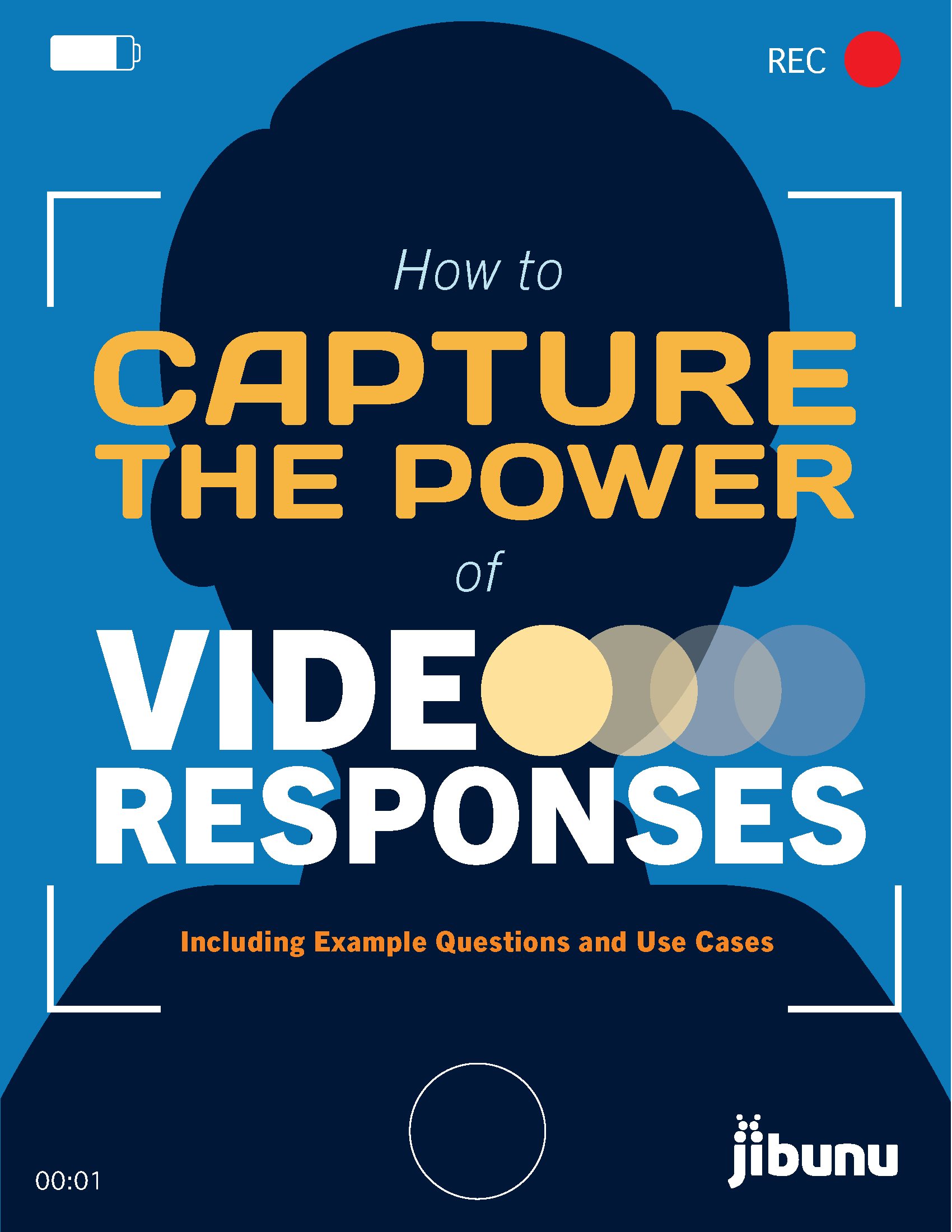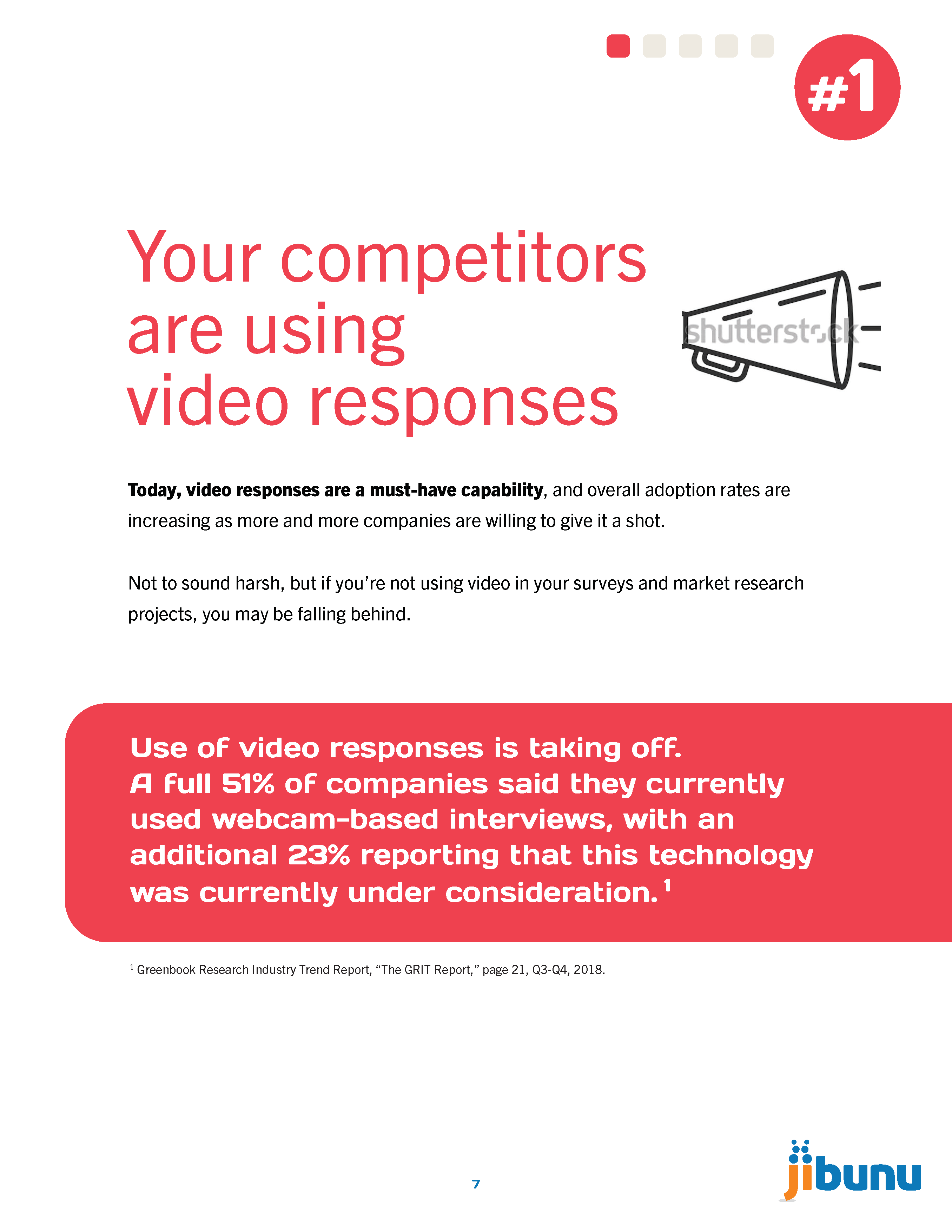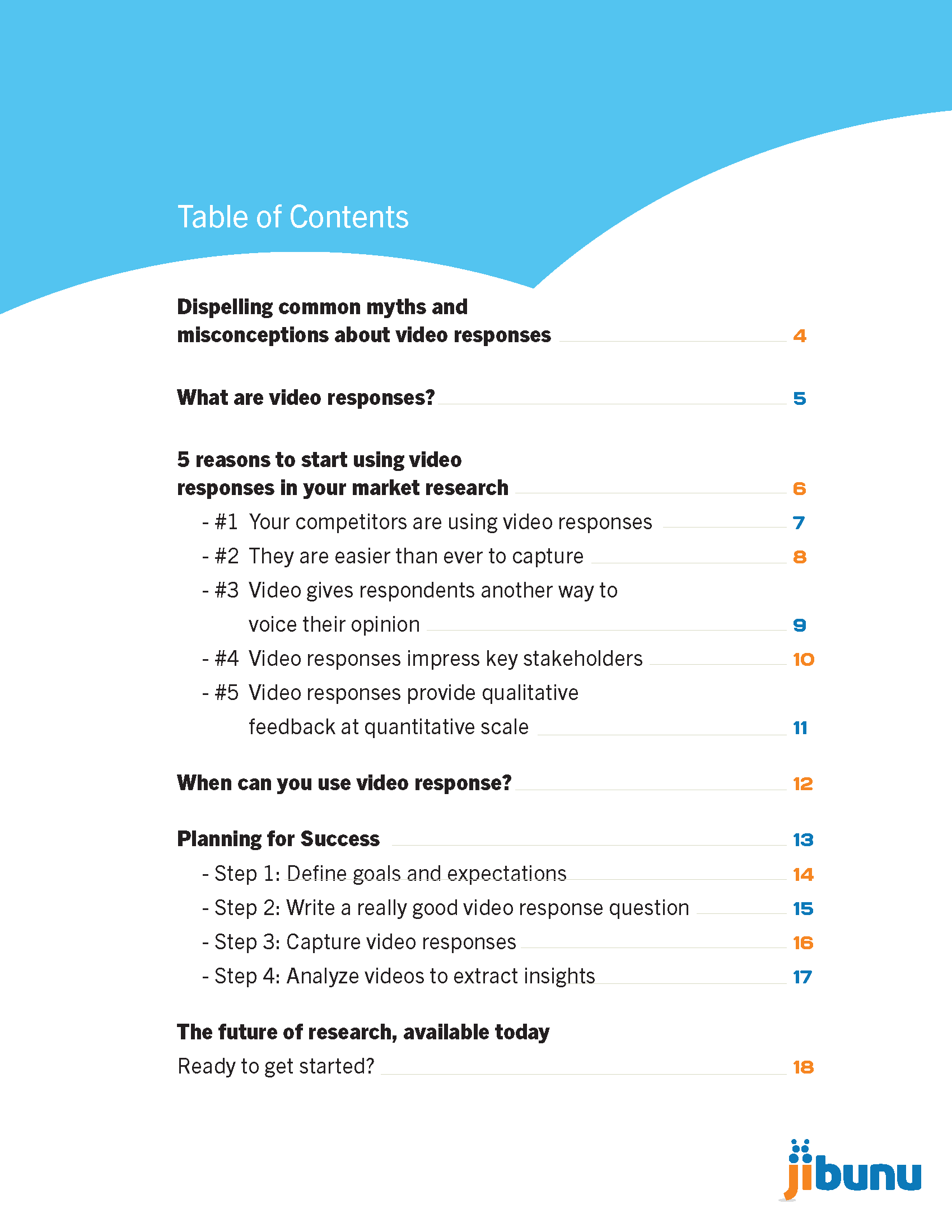This eBook will take a look at using open-ended video responses in market research. More specifically, it will highlight many benefits of this technology and the steps needed to implement it.
This eBook will take a look at using open-ended video responses in market research. More specifically, it will highlight many benefits of this technology and the steps needed to implement it.





Quick Links
Address
310 Authority Drive
Fitchburg, MA 01420
Quick Links
Phone
978-537-5510
info@jibunu.com
Copyright 2024 Jibunu. All Rights Reserved.
Privacy Policy